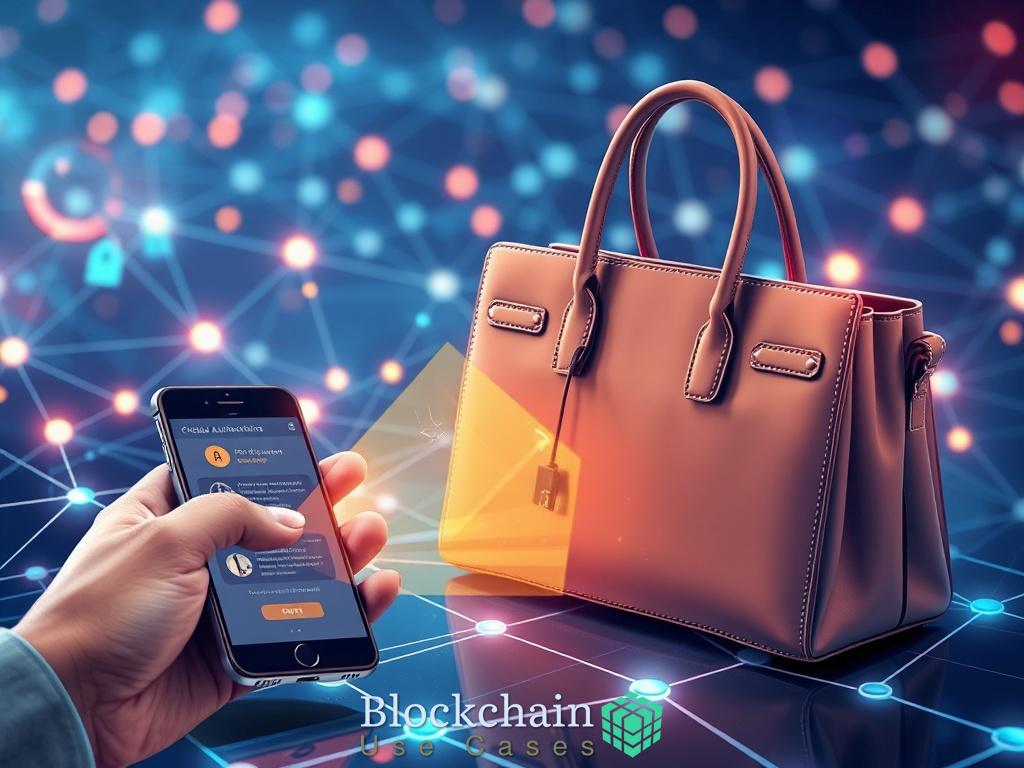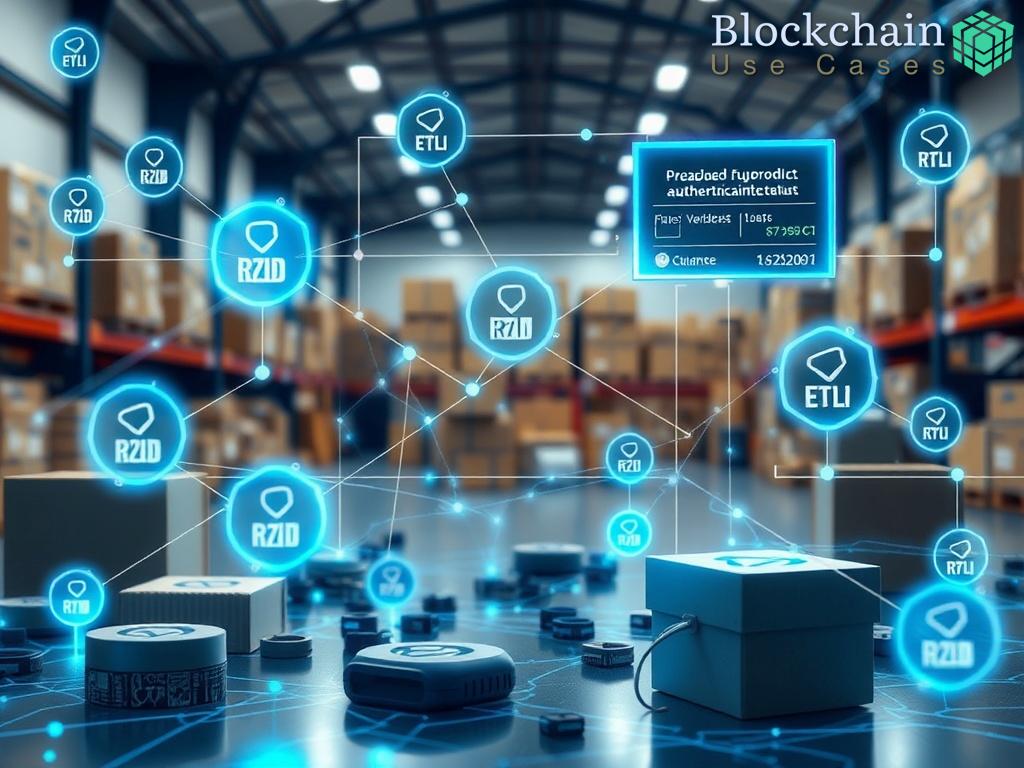Introduction to Blockchain and IoT Integration

The convergence of blockchain technology and the Internet of Things (IoT) is revolutionizing the way we authenticate products and combat counterfeiting. With increasing concerns over product authenticity across various sectors, this integration offers a robust solution that enhances traceability, security, and transparency. By leveraging decentralized ledgers and connected devices, businesses can ensure that every product’s journey is documented and verifiable, significantly reducing the potential for counterfeit goods.
Blockchain technology provides a decentralized and immutable record of transactions, which complements the data collected by IoT devices. This synergy not only boosts the credibility of the information shared by IoT devices but also enhances data security. Each IoT device can act as a node in the blockchain network, contributing to a shared ledger that tracks product status, location, and authenticity in real-time.
Below is a comparison of traditional product verification methods versus blockchain-IoT integrated approaches:
| Feature | Traditional Verification | Blockchain-IoT Integration |
|---|---|---|
| Security | Centralized databases prone to hacking | Decentralized, tamper-proof ledger |
| Traceability | Limited visibility, often reliant on manual audits | Real-time tracking enabled by IoT devices |
| Cost | High costs due to inefficient processes | Reduced costs through automated verification |
| Transparency | Opaque processes, difficult to validate | Full visibility for all stakeholders |
As industries continue to embrace this integration, we can foresee a future where counterfeit products become a relic of the past. With the scalability of blockchain and the ubiquity of IoT devices, businesses can implement robust product authentication systems that not only protect their brand integrity but also foster consumer trust. The potential applications of this technology span various sectors, including luxury goods, pharmaceuticals, and electronics, paving the way for a safer marketplace.
Mechanisms of Product Authentication

The integration of blockchain technology with IoT devices enables a transformative approach to product authentication, essential for combating the pervasive issue of counterfeiting in today’s marketplace. This synergy not only establishes a secure framework for verifying product authenticity but also enhances the overall integrity of supply chains across various industries.
At the heart of blockchain’s capability in product authentication is its decentralized nature. Unlike traditional systems that rely on a central authority, blockchain allows for a network of distributed nodes, each maintaining a copy of the ledger. This means that information regarding product provenance is not only secure but also verifiable by multiple parties.
IoT devices continuously gather data about products throughout their lifecycle, from production to delivery. By integrating this data with blockchain, businesses can achieve real-time insights into product status. This capability not only enhances operational efficiency but also alerts stakeholders immediately in case of discrepancies, effectively thwarting the distribution of counterfeit goods.
Below is a list outlining the essential features that underscore the effectiveness of using blockchain in conjunction with IoT for product authentication:
- Immutability: Once data is entered into the blockchain, it cannot be altered, ensuring that product information remains unchanged, enhancing trust among consumers.
- Transparency: All participants in the supply chain have access to the same information, which fosters accountability and deters fraudulent activities.
- Traceability: Each product can be tracked at every stage, providing a comprehensive history that can be easily verified.
- Cost Efficiency: Automating verification processes reduces manual oversight, leading to significant cost savings for businesses.
- Enhanced Security: The decentralized nature of blockchain makes it less vulnerable to hacking compared to traditional centralized systems.
As businesses continue to leverage these mechanisms, they not only protect their brands but also enhance consumer confidence in their products. The future of product authentication is undoubtedly intertwined with the capabilities of blockchain and IoT, paving the way for a more secure and reliable marketplace.
Case Studies on Counterfeit Reduction
The integration of blockchain and IoT technologies is not just a theoretical concept; it is producing tangible results in the fight against counterfeiting. Various industries are embracing this innovative approach, leading to significant reductions in counterfeit products. By examining real-world applications, we can uncover the profound impact this technology has on product authentication and supply chain integrity.
In the luxury fashion sector, brands like Louis Vuitton have implemented blockchain and IoT solutions to protect their iconic products. By embedding RFID tags in their items, these brands can track the journey of each product from manufacturing to retail. Coupled with a blockchain ledger, the unique identifiers allow consumers to verify authenticity through a simple scan on their smartphones. This not only enhances customer trust but also deters counterfeiters who find it increasingly difficult to replicate the sophisticated tracking systems in place.
The pharmaceutical industry has been another major beneficiary of this technology fusion. For instance, Modum, a company specializing in supply chain solutions, is utilizing blockchain to monitor temperature-sensitive medications. By integrating IoT sensors with blockchain, Modum ensures that drugs maintain the required conditions during transit. If any discrepancies occur, stakeholders are immediately alerted, and the product can be traced back to its origin, drastically reducing the chances of counterfeit medications entering the market. This not only safeguards consumer health but also reinforces regulatory compliance.
Another notable example can be found in the consumer electronics sector, where companies like IBM are collaborating with manufacturers to combat counterfeit components. By leveraging blockchain and IoT, every electronic component can be tracked from production to assembly. This comprehensive oversight allows manufacturers to ensure that only genuine parts are used in their devices. Moreover, consumers can verify the authenticity of their purchases through a mobile application, fostering a safer and more reliable shopping experience.
As these case studies demonstrate, the convergence of blockchain and IoT is not merely a trend but a revolutionary shift in how industries combat counterfeiting. By harnessing these technologies, businesses are not only enhancing product authentication but also creating a more transparent and trustworthy marketplace for consumers.
Challenges in Implementation
As industries increasingly recognize the potential of integrating blockchain with IoT for product authentication, it is essential to address the challenges that accompany such a transformative shift. While the benefits are significant—ranging from enhanced security to improved traceability—the path to effective implementation can be fraught with obstacles that organizations must navigate. Understanding these challenges is crucial for businesses looking to leverage this technology to combat counterfeiting.
One of the primary hurdles in the implementation process is the complexity of integration. Merging blockchain protocols with existing IoT infrastructures requires a high level of technical expertise and a thorough understanding of both systems. This complexity is exacerbated by the need for interoperability among various devices and platforms, which can lead to inconsistencies and increased costs. Additionally, organizations must often train their workforce to manage and maintain these new technologies effectively, leading to further resource allocation.
Another significant challenge lies in data privacy and security. Although blockchain is known for its inherent security features, the data collected by IoT devices can be sensitive. Balancing the need for transparency with the potential risks associated with exposing proprietary or personal information poses a dilemma for businesses. Ensuring that the data shared on the blockchain is both secure and compliant with regulations such as GDPR is paramount. Failure to adhere to these regulations can not only lead to legal repercussions but also erode consumer trust.
Implementing a blockchain-IoT solution can also be a costly endeavor. The financial investment required for developing the necessary infrastructure, along with ongoing operational costs, may deter some organizations from pursuing this integration. This concern is particularly pronounced for small and medium-sized enterprises (SMEs) that may lack the resources to invest in such technologies. Furthermore, as businesses scale their operations, maintaining a robust blockchain network that accommodates an increasing number of IoT devices can present additional challenges. Ensuring that the system can handle larger volumes of data while maintaining performance and security is critical.
In conclusion, while the integration of blockchain with IoT for product authentication presents a groundbreaking opportunity to reduce counterfeiting, businesses must proactively address the associated challenges. By recognizing the complexities of integration, prioritizing data privacy, and judiciously managing costs, organizations can lay the groundwork for a successful implementation that not only protects their products but also fosters consumer confidence in an increasingly digital marketplace.
Future Trends in IoT and Blockchain Technology
The integration of blockchain technology with the Internet of Things (IoT) is set to redefine the landscape of product authentication in the coming years. As businesses increasingly recognize the potential to combat counterfeiting, emerging trends will shape how these technologies are utilized, enhancing security and transparency in supply chains. The future promises not only advancements in technology but also the evolution of consumer expectations and regulatory frameworks that will further drive this integration.
As the synergy between blockchain and IoT continues to mature, the development of standardized protocols will become paramount. Organizations will likely advocate for common frameworks to facilitate seamless communication and interoperability among devices. This collaborative approach will not only foster innovation but will also reduce the complexities associated with integrating diverse technologies. The establishment of industry standards will empower businesses to adopt blockchain-IoT solutions more readily, minimizing the barriers that currently inhibit widespread implementation.
In the near future, consumers will play an increasingly active role in the product authentication process. With the advent of user-friendly mobile applications and smart devices, individuals will not only verify the authenticity of products but also engage with brands in unprecedented ways. These innovations will enable consumers to trace the entire lifecycle of a product, from its origin to its current location, thus enhancing their confidence in product integrity. Moreover, as consumer awareness around counterfeiting grows, companies that leverage these technologies will likely enjoy a competitive edge, fostering greater loyalty among their customer base.
As blockchain and IoT technologies continue to evolve, regulatory bodies will likely increase their focus on establishing guidelines that govern their use in product authentication. Businesses must stay ahead of these regulatory changes to ensure compliance while maximizing the benefits of these technologies. By adopting proactive measures, such as implementing robust data privacy practices and maintaining transparency in their operations, companies can mitigate risks and enhance their reputation. This regulatory influence will serve as a catalyst for innovation, pushing organizations to refine their blockchain-IoT frameworks to meet evolving compliance standards.
As we look toward the future, the integration of blockchain and IoT for product authentication is poised to create a more secure and trustworthy marketplace. By harnessing emerging technologies, prioritizing consumer engagement, and adhering to regulatory standards, businesses will not only reduce counterfeiting but also foster a culture of accountability that resonates with consumers. The convergence of these technologies represents a transformative shift that will shape the way products are authenticated and verified, paving the way for a new era of transparency and trust.





